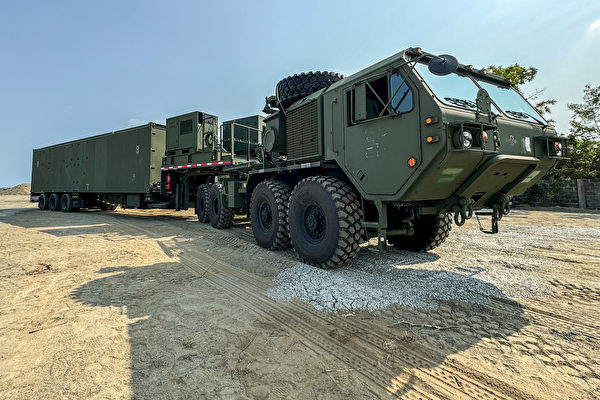The US military high command is evaluating the Chinese Communist Party’s attempt to have the capability to attack Taiwan by 2027, and has been positioning military forces near Taiwan to counter the Chinese threat. The Pentagon is establishing more bases on the northernmost island of Luzon in the Philippines, deploying stealth aircraft and new missiles. These military preparations will play a crucial role in the event of a conflict in the Taiwan Strait, making China wary.
Last February, the US obtained the rights to use four new military bases in the Philippines. These strategic locations provide forward bases for US forces to monitor Chinese activities in the South China Sea and the Taiwan Strait, filling a gap in the Pacific island chain from South Korea and Japan to Australia.
Currently, the closest US military base to Taiwan is the Kadena Air Base in Okinawa, Japan, approximately 400 miles away. Therefore, these four new bases in the Philippines are of great importance to the US as they are only about 250 miles from Taiwan.
According to a report from the US Navy News on April 15, the US military dispatched the first Multidomain Task Forces (MDTF) Strategic Fires Battalion (SFB) to deploy the “Typhon” medium-range missile system on the northern part of Luzon Island in the Philippines. This system has a range of over 2,000 kilometers and can reach China’s southeastern coastal areas, including the sensitive South China Sea and Taiwan Strait. Experts view this deployment as a way for the US to showcase its military strength in the Indo-Pacific region to deter China.
The Mid-Range Capability Battery stationed in the first MDTF in Washington state is one of four units with hundreds of soldiers operating four launchers. They can launch Tomahawk land-attack cruise missiles or SM-6 intercept missiles, capable of shooting down aircraft and enemy missiles, including ballistic and certain hypersonic missiles. The SM-6 missile can also engage surface targets in critical moments.
The new US launchers can target land, sea, and air targets, with a range of up to a thousand miles. Lieutenant General Bernard Harrington, commander of the first MDTF, stated that deploying them to Luzon Island, even temporarily, is “an important step in our cooperation with the Philippines.”
On April 30, the UK’s Telegraph reported that US Army missiles deployed from Luzon Island could target Chinese ships, aircraft, missiles, and drones threatening Taiwan, and even strike Chinese bases and ports where these assets are located. The same Army missiles could protect the old Air Force bases being renovated by the US Air Force on Luzon Island.
Dr. Satoru Nagao, a military scholar at the Hudson Institute in Washington, told BBC Chinese that the deployment of the “Typhon” system could be used strategically in handling military conflicts in the Taiwan Strait.
He said, “If a conflict erupts in the Taiwan Strait, and the People’s Liberation Army of China attacks Taiwan, they would need to use many air force bases. But if runways are attacked, Chinese bombers would temporarily be unable to take off. Therefore, by using missiles for repeated and sustained attacks, we can disrupt China’s aerial operations against Taiwan, targeting not only air force bases but also naval vessels.”
In response, the Chinese Foreign Ministry stated that China firmly opposes the US’ deployment of medium-range missiles in the Asia-Pacific region to seek unilateral military advantage and enhance forward deployments at China’s doorstep.
Last March, the US Air Force deployed F-22 fighter jets to Clark Air Base on Luzon Island, marking the first deployment of US stealth fighters to the Philippines. The dispersal of bases that still allow US forces to approach the most likely combat zones around Taiwan is crucial for US war plans.
Currently, the US has access to at least three bases on Luzon Island. Last year, US and Philippine engineers started repairing a 1.7-mile runway at one of the bases in Pangasinan province, indicating Luzon Island is becoming a potential primary combat location for the US military.
Imagine US Air Force F-35 fighters taking off from Philippine air bases, engaging in combat with Chinese aircraft in southern Taiwan, while US Army Tomahawk missiles strike Chinese air force bases, and SM-6 missiles intercept Chinese missiles targeting the F-35.
According to mainland Chinese media Netease, Clark Air Base in western Luzon, facing the Sibutu Strait to the north and the South China Sea to the west, along with Subic Bay Naval Base, Bicobay Naval Health Center, and San Miguel Naval Communication Base, forms the largest US military base cluster in Southeast Asia from the Cold War era, where even B-52 strategic bombers could be deployed. Now with the return of F-22 fighters, whether for controlling the South China Sea or the Sibutu Strait, the tactical significance is significant.
The report noted that if there are major obstacles for US military operations from Luzon Island to the areas around Taiwan, it is political barriers. However, these barriers are currently diminishing. Chinese coast guard ships have been harassing Philippine supply ships near Ren’ai Reef in the South China Sea. In March this year, a Chinese coast guard ship fired a powerful water cannon at a Philippine navy ship. Each maritime attack pushes the Philippines towards the US, bringing the Philippines closer to other major powers in the region, who will view Chinese expansionism with greater hostility and are more likely to fight alongside the US for Taiwan.
Importantly, the Philippines does not need to launch a missile or send out a plane to help defeat a Chinese invasion of Taiwan. All they need to do is allow US Army missile units and Air Force fighter jets into these crucial bases.

